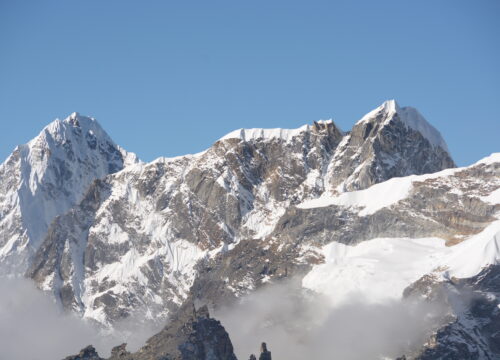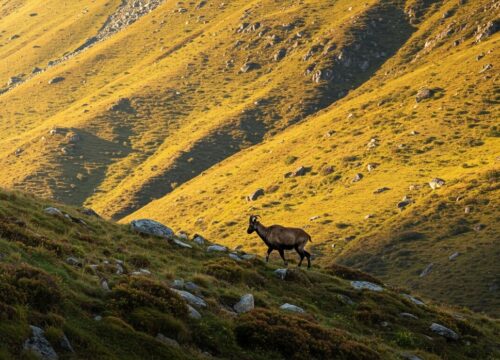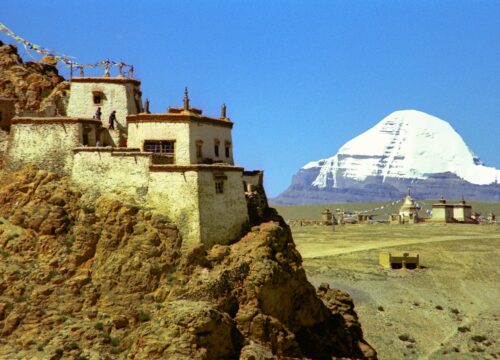Halesi Mahadev Cave
From
Duration
Tour Type
Explore Tours
Halesi Mahadev Cave is a sacred site of immense religious and cultural significance in the Khotang District of eastern Nepal. This ancient cave complex, situated between the holy rivers Dudh Koshi and Sun Koshi, is of great importance to Hindus, Buddhists, and Kirat people alike.
Geographical Features
The cave is located approximately 185 kilometers southwest of Mount Everest and about 222 kilometers east of Kathmandu. It has an elevation that ranges from 3,100 to 4,734 feet above sea level. The main entrance of the cave is shaped like a half-moon and faces east, descending 67 feet below the surface. Inside, the cave is spacious and round, measuring 193 feet in diameter with a floor circumference of 223 feet.
Religious Significance
Hindu Beliefs
Halesi Mahadev is highly revered by Hindus as the dwelling place of Lord Shiva. According to legend, approximately 6,000 years ago, Lord Shiva took refuge in this cave to escape the demon Bhasmasur. Inside the cave, there is a two-foot-tall self-manifested Shiva Linga, which serves as the central object of worship.
Buddhist Significance
Buddhists refer to the site as Maratika Cave, where the spiritual master Padmasambhava and his consort Mandarava are believed to have achieved the realization of immortality. It is regarded as one of the six most significant pilgrimage sites for Vajrayana Buddhists.
Kirat Tradition
The Kirat community, especially the Rai, regards Halesi as an ancestral deity. According to their oral tradition, known as Kirat mundhum, their ancestor Raechhakule, also called Khokchilipa or Hetchhakuppa, once lived in the Halesi cave in ancient times.
Cave Complex
The Halesi-Maratika cave complex consists of three main caves, symbolically representing the three major deities in Hinduism: Brahma, Vishnu, and Shiva. These caves are also referred to as the three eyes of Lord Shiva. The complex features various chambers and formations:
- Mahadev Cave: The primary cave housing the Shiva Linga.
- Basaha Cave: Another significant cave in the complex.
- Additional Features: The site includes holy ponds, believed footprints of deities, and various small caves with names like Swargdwar (heaven entrance), Janmadwar (birth entrance), Paapdwar (sin entrance), and Dharmadwar (religion entrance).
Cultural and Religious Practices
Halesi Mahadev is a popular pilgrimage destination, especially during festivals such as Shivaratri, Ram Nawami, and Ganesh Chaturthi. Devotees perform various rituals, including bathing the Shiva Linga with holy water from the natural spring inside the cave.
Tourism and Accessibility
In recent years, efforts have been made to improve accessibility to the site. Visitors can reach Halesi by road from Kathmandu, a journey that takes about 8 to 10 hours. Alternatively, one can fly to Lamidanda Airport and then travel by road to the site. The area around the cave offers beautiful natural scenery, adding to the spiritual experience of the pilgrimage. Halesi Mahadev Cave stands as a testament to Nepal’s rich religious heritage, blending natural wonders with deep-rooted spiritual beliefs and practices. Its significance across multiple faiths makes it a unique and important site in the country’s cultural landscape.
Included/Exclude
Tour Amenities
Itinerary
- Arrive at Tribhuwan International Airport in Kathmandu
- Meet and greet with the tour representative
- Transfer to your hotel in Kathmandu
- Evening: Brief introduction to the tour program
- Overnight stay in Kathmandu
- Early morning breakfast at the hotel
- 8:00 AM: Depart from Kathmandu by private vehicle
- Journey details:
- Distance: 222 km
- Duration: Approximately 8-9 hours
- Route: Via Dhulikhel, Nepalthok, Khurkot, Ghurmi, and Okhaldhunga
- Enjoy scenic views of terraced fields, green hills, and small villages
- Evening: Arrive in Halesi and check into a hotel/resort near the cave
- Participate in the evening Arati Puja (worship) at Halesi Mahadev Temple
- Dinner and overnight stay in Halesi
- Early morning: Visit Halesi Mahadev Temple for darshan (worship)
- After breakfast, explore the cave complex:
- Main Halesi Mahadev Cave (67 feet below surface)
- Observe the half-moon shaped entrance facing east
- Visit the two-foot-tall self-manifested Shiva Linga
- Explore the five symbolic doors: Swarga Dwar, Janma Dwar, Paap Dwar, Dharma Dwar, and Ghopte Dwar
- See the holy ponds and believed deity footprints
- Afternoon: Hike around the Maratika area
- Evening: Meditation session inside the cave
- Dinner and overnight stay in Halesi
- Morning: Revisit Halesi Mahadev Temple for final worship
- After breakfast, explore other significant sites:
- Basaha Cave
- Buddhist stupa adjacent to the Hindu temple
- Nandi image in the second cave
- Bhairav image in the third cave
- Midday: Begin the return journey to Kathmandu
- Approximately 8-9 hours drive
- Evening: Arrive in Kathmandu
- Overnight stay in Kathmandu
- Morning: Breakfast at the hotel
- Half-day Kathmandu sightseeing tour (optional):
- Visit Pashupatinath Temple
- Explore Bouddhanath Stupa
- See Swoyambhunath Temple
- Tour Kathmandu Durbar Square
- Afternoon: Free time for shopping or relaxation
- Evening: Transfer to Tribhuwan International Airport for departure
1. Scenic Drive through Nepal's Hills
- The road to Halesi Mahadev passes through picturesque landscapes of Nepal’s hilly regions.
- You will travel alongside the Dudh Koshi and Sun Koshi rivers, which add to the natural beauty of the journey.
- The route includes charming villages, terraced fields, and lush green hills, offering a glimpse of rural Nepalese life.
2. Cultural and Natural Attractions En Route
- Dhulikhel and Khurkot: These towns provide opportunities to stop for refreshments and enjoy panoramic mountain views.
- Ghurmi and Okhaldhunga: Known for their serene environment and local culture, these areas make the drive more enriching.
- Jayaram Ghat: A scenic spot near the Sun Koshi River that offers a tranquil atmosphere
3. Halesi Mahadev Cave Complex
- Tri-Cave Complex: Symbolizing the three eyes of Lord Shiva, these caves hold immense religious significance for Hindus, Buddhists, and Kirat communities.
- Sacred Entrances (Dwars):
- Swarga Dwar (Heaven Gate): Believed to lead to heaven.
- Janma Dwar (Birth Gate): Represents rebirth.
- Paap Dwar (Sin Gate): Associated with purification from sins.
- Dharma Dwar (Religion Gate): Symbolizes righteousness.
- Ghopte Dwar: A mysterious passage with spiritual significance.
- Shiva Linga: A self-manifested Shiva Linga inside the main cave is the focal point of worship.
4. Spiritual Environment
- The serene and mystical setting of Halesi Mahadev Cave is enhanced by its location on a hilltop surrounded by forests and natural beauty.
- The area is dotted with natural limestone formations, small ponds believed to have healing properties, and imprints said to be footprints of deities.
5. Local Culture
- Along the way, you can interact with local communities such as the Tamang, Rai, Newar, and Sherpa people in nearby villages like Jaleshwori.
- These interactions provide insights into traditional lifestyles, farming practices, and cultural heritage.
6. Panoramic Mountain Views
On clear days during the drive or from Halesi itself, you can enjoy stunning views of snow-capped peaks like Numbur Himal, Kyashar Peak, and even Mount Everest in the distance.



